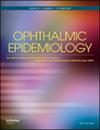Evaluation of Sociomedical Factors on Corneal Donor Recovery Using Machine Learning.
IF 1.2
4区 医学
Q3 OPHTHALMOLOGY
引用次数: 0
Abstract
PURPOSE To evaluate co-morbid sociomedical conditions affecting corneal donor endothelial cell density and transplant suitability. METHOD(S) Corneal donor transplant information was collected from the CorneaGen eye bank between June 1, 2012 and June 30, 2016. A natural language processing algorithm was applied to generate co-morbid sociomedical conditions for each donor. Variables of importance were identified using four machine learning models (random forest, Glmnet, Earth, nnet), for the outcomes of transplant suitability and endothelial cell density. SHAP (SHapley Additive exPlanations) values were generated, with beeswarm and box plots to visualize the contribution of each feature to the models. RESULTS With a total of 23,522 unique donors, natural language processing generated 30,573 indices, which were reduced to 41 most common co-morbid sociomedical conditions. For transplant suitability, hypertension ranked the top overall variable of importance in two models. Hypertension, chronic obstructive pulmonary disease, history of smoking, and alcohol use appeared consistently in the top variables of importance. By SHAP feature importance, hypertension (0.042), alcohol use (0.017), ventilation of donor (0.011), and history of smoking (0.010) contributed the most to the transplant suitability model. For endothelial cell density, hypertension was the sociomedical condition of highest importance in three models. SHAP scores were highest among the sociomedical conditions of hypertension (0.037), alcohol use (0.013), myocardial infarction (0.012), and history of smoking (0.011). CONCLUSION In a large cohort of corneal donor eyes, hypertension was identified as the most common contributor to machine learning models examining sociomedical conditions for corneal donor transplant suitability and endothelial cell density.利用机器学习评估角膜捐献者恢复的社会医学因素。
目的评估影响角膜捐献者内皮细胞密度和移植适宜性的共病社会医疗条件。方法在2012年6月1日至2016年6月30日期间从CorneaGen眼库收集角膜捐献者移植信息。采用自然语言处理算法为每位捐献者生成共病社会医疗条件。使用四种机器学习模型(随机森林、Glmnet、Earth、nnet)确定了移植适宜性和内皮细胞密度结果的重要变量。结果总共有 23522 名独特的捐献者,通过自然语言处理生成了 30573 个指数,并将其归纳为 41 种最常见的合并社会医疗条件。就移植适宜性而言,高血压是两个模型中最重要的总体变量。高血压、慢性阻塞性肺病、吸烟史和酗酒一直是最重要的变量。从 SHAP 特征的重要性来看,高血压(0.042)、酗酒(0.017)、供体通气(0.011)和吸烟史(0.010)对移植适宜性模型的贡献最大。就内皮细胞密度而言,高血压是三个模型中最重要的社会医学条件。结论 在大量的角膜供体眼球中,高血压被确定为机器学习模型中最常见的因素,这些模型检查了角膜供体移植适宜性和内皮细胞密度的社会医疗条件。
本文章由计算机程序翻译,如有差异,请以英文原文为准。
求助全文
约1分钟内获得全文
求助全文
来源期刊

Ophthalmic epidemiology
医学-眼科学
CiteScore
3.70
自引率
5.60%
发文量
61
审稿时长
6-12 weeks
期刊介绍:
Ophthalmic Epidemiology is dedicated to the publication of original research into eye and vision health in the fields of epidemiology, public health and the prevention of blindness. Ophthalmic Epidemiology publishes editorials, original research reports, systematic reviews and meta-analysis articles, brief communications and letters to the editor on all subjects related to ophthalmic epidemiology. A broad range of topics is suitable, such as: evaluating the risk of ocular diseases, general and specific study designs, screening program implementation and evaluation, eye health care access, delivery and outcomes, therapeutic efficacy or effectiveness, disease prognosis and quality of life, cost-benefit analysis, biostatistical theory and risk factor analysis. We are looking to expand our engagement with reports of international interest, including those regarding problems affecting developing countries, although reports from all over the world potentially are suitable. Clinical case reports, small case series (not enough for a cohort analysis) articles and animal research reports are not appropriate for this journal.
 求助内容:
求助内容: 应助结果提醒方式:
应助结果提醒方式:


